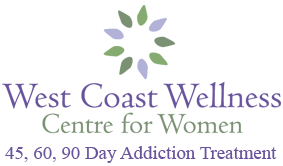Women in Recovery from Addiction
While addiction is a huge problem for millions of people across the nation, certain populations have specialized needs that aren’t always properly addressed. Women are one of these underrepresented groups when it comes to recovery.
For example, according to the UN World Drug Report 2015, only 20 percent of people in addiction treatment are women, even though about 33 percent of drug users are female. Furthermore, nearly 13 percent of women 18 and older have experimented with illegal drugs, including marijuana and the misuse of prescription drugs.
Additional Obstacles
The following problems further complicate participation in drug rehab for women:
• Domestic violence
• Cultural, religious or other stigmas
• Poverty
• Prostitution
• A legitimate fear of losing custody of children
However, some of these same factors can motivate women to actively pursue sobriety. For example, a mother who might lose custody of her child unless she seeks substance abuse treatment might make the effort to focus on recovery.
Factors that Impact Success in Treatment for Women
In order to encourage women to remain in treatment, it’s important to be aware of the various factors that studies have found to affect a women’s chance of success in treatment.
• Women of color: Research generally shows that women of color are not as successful in treatment, although this might be specifically related to financial status.
• Education: A woman who has at least completed high school has a greater likelihood of remaining in treatment.
• Age: In general, women in recovery who are under than age of 21 do not have the same likelihood of finishing outpatient treatment as older women.
• Relationships: Encouragement from a spouse or significant other can motivate a woman toward treatment and continued abstinence. However, if the woman begins a new relationship with another person in treatment at the same time that she starts a new program, she will probably not complete treatment if her new partner quits treatment.
• Court order: To attend treatment via child protective services or the criminal justice system: Once the criminal justice system or child protective services becomes involved, women are more likely to comply with treatment requirements.
• Pregnancy: While it seems clear that pregnancy affects treatment, women might leave a facility during the first trimester but stay in treatment during their last trimester. In addition, when a woman becomes pregnant during treatment, her pregnancy can further interrupt her recovery.
• Pregnancy: With co-occurring mental health issues: Pregnant women with psychiatric or personality disorders struggled to complete treatment, while those with less serious mental health challenges faced a higher likelihood of compliance.
Further Considerations for Women in Treatment
Women who deal with addiction cite various other reasons for their involvement with drugs, such as:
• Weight control
• Coping with pain
• Self-medication
• Attempts to treat mental health issues
• Dealing with fatigue or exhaustion
Gender impacts treatment in complex ways. For example, a woman will generally seek help sooner after beginning drug use, but her substance abuse problems might escalate more quickly than a man’s.
Applying the Data in Practical Ways
All of this data can be used to develop effective treatment facilities for women where they feel safe and can open up with others to begin the healing process. By placing them in a secure environment that specifically focuses on their needs, they will likely face improved recovery rates as opposed to co-ed treatment.
Facilities should address biological differences, and the related environmental and social factors, taking into consideration the following:
• Why a woman began drug use
• Why she wants treatment
• Where she will respond the best
• What methods will be most effective
• What will happen if she fails to receive treatment



Leave A Comment
You must be logged in to post a comment.